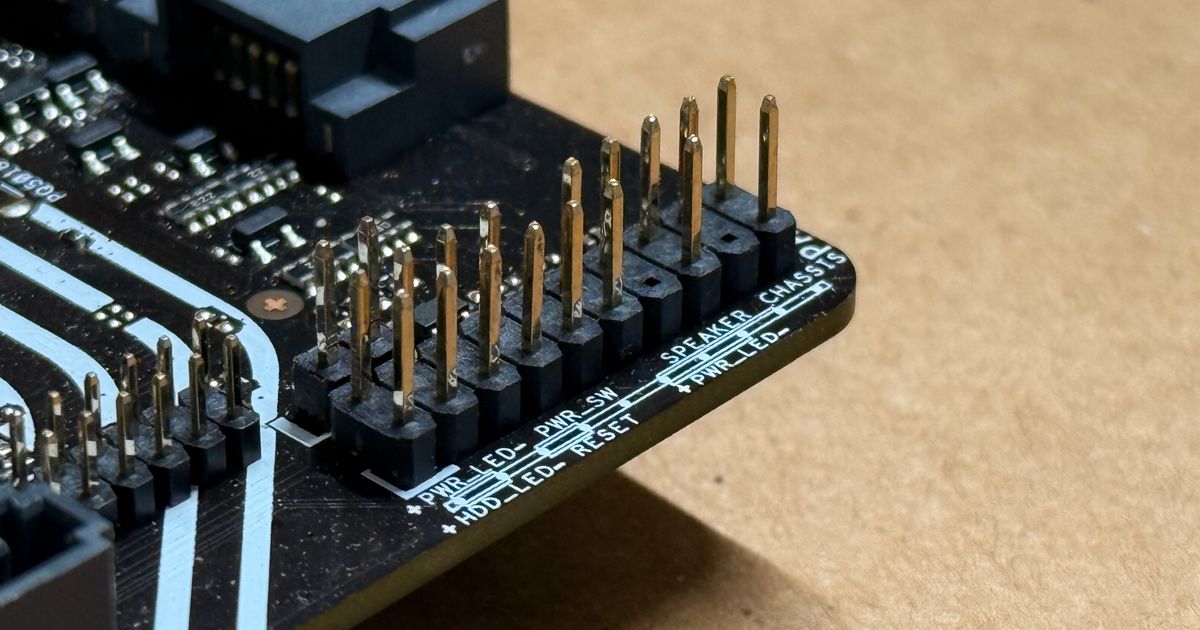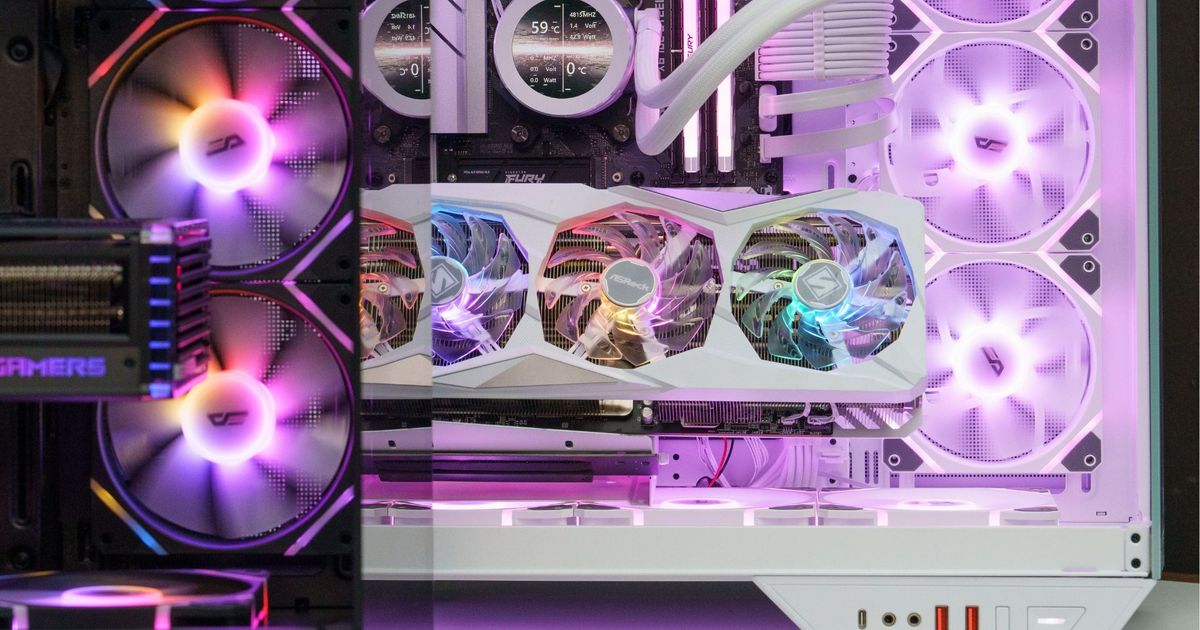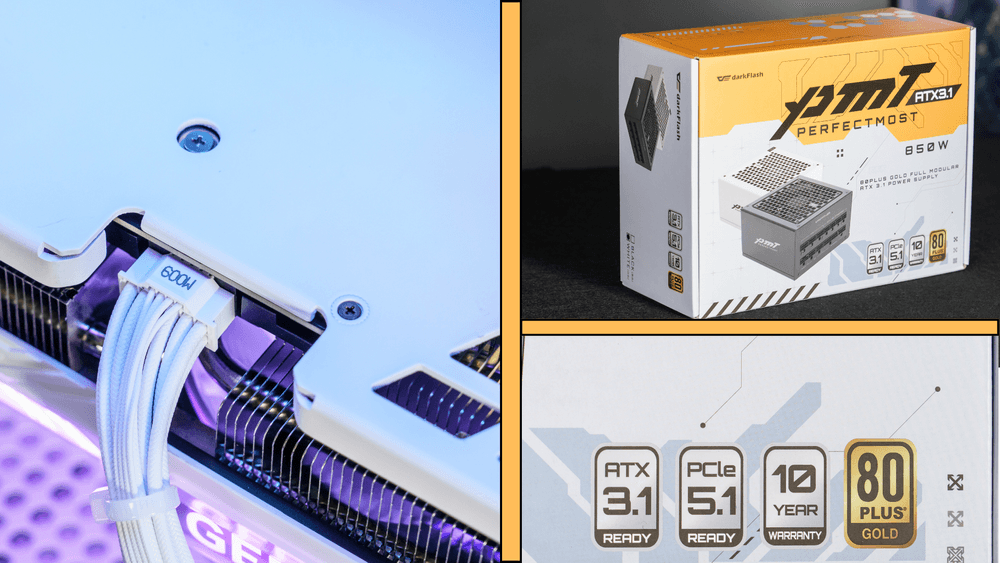
Building a gaming PC means paying attention to every component – including the power supply. In recent years, Intel released new ATX power supply standards (ATX 3.0 and ATX 3.1) to accommodate the increasing power demands of modern hardware. This article breaks down the differences between ATX 3.0 and ATX 3.1 in a beginner-friendly way, focusing on practical implications for PC builders and gamers. We’ll cover what changed in the 12V-2x6 connector, how transient power excursion limits differ, and what it means for choosing a PSU.
Introduction to ATX 3.0 and ATX 3.1
ATX 3.0 is a major update to the long-standing ATX power supply design guide, released by Intel in 2022. It was developed in response to new generations of GPUs and CPUs that can draw significantly more power, with rapid spikes in consumption. ATX 3.0 introduced new guidelines to ensure PSUs can deliver these power spikes reliably, and it also brought in a new high-power connector (the 12VHPWR) for next-gen graphics cards. For PC builders, ATX 3.0 PSUs marked a big step forward from earlier ATX 2.x units, especially if you plan to use high-end GPUs like NVIDIA’s RTX 5000 series.
ATX 3.1, released in 2023, is a refinement of the 3.0 standard. It builds on the same features but includes some tweaks based on industry feedback and new PCI-SIG updates. While not a revolutionary jump, ATX 3.1 updated certain technical specifications – notably the 12V-2x6 (Previously Known as 12VHPWR) connector design and the transient power excursion requirements – to improve safety and performance. For the average gamer or builder, an ATX 3.1 PSU is largely similar to ATX 3.0, but with a bit more polish on these key aspects.
The 12VHPWR Connector: Updates from ATX 3.0 to 3.1
One of the headline features of ATX 3.0 was the introduction of the 12VHPWR connector (sometimes called the “PCIe 5.0 16-pin” power connector). This 12+4 pin connector can supply up to 600 Watts to a graphics card over a single cable – a big improvement over the older 8-pin (150 W) connectors. The extra 4 pins are sense wires that communicate with the GPU, allowing it to know the power capacity available (e.g. 150W, 300W, 450W, or 600W depending on cable/PSU). In practice, this meant ATX 3.0 PSUs could ship with a single native cable for high-end GPUs (no more multiple daisy-chained 8-pins or adapter dongles), simplifying cable management for builders.
ATX 3.1 keeps the that same connector, but incorporates an updated design as defined by PCI-SIG. Often referred to as the 12V-2x6 connector, the revised connector has subtle mechanical improvements to enhance safety. For example, the sense-pin configuration and pin length were adjusted to ensure the GPU can detect a proper full insertion of the plug (reducing the chance of the connector not being fully seated – a known issue that led to some melting connectors in early RTX 4090 usage). In short, ATX 3.1’s power connector is the same shape and pin-count, but built to a refined standard: if you buy an ATX 3.1 PSU, its 12VHPWR cable will adhere to the latest PCIe spec for better contact and durability.
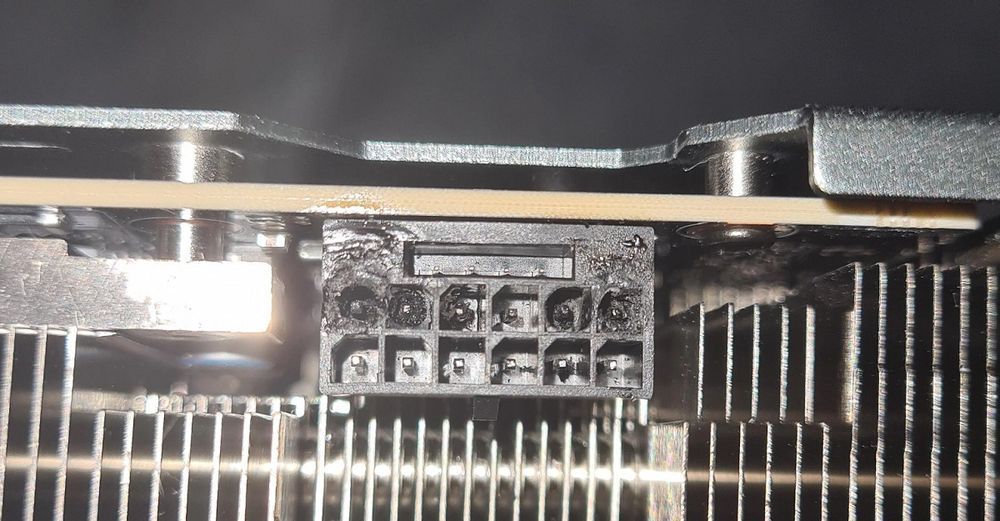
↑Graphics card damaged due to overheating connector (Image from reddit, r/nvidia)
From a builder’s perspective, both ATX 3.0 and 3.1 PSUs will support the latest GPUs with the 12VHPWR or 12V2x6. There’s no difference in how you plug in your card – they are cross-compatible. The advantage of ATX 3.1’s version is simply added reliability. If you already have an ATX 3.0 PSU with a 12VHPWR and use it correctly (fully seated cable, not bending it too sharply, etc.), you’re generally fine. But ATX 3.1 gives extra peace of mind that the connector meets the newest safety refinements from PCI-SIG.
Transient Power Excursions: Handling Spikes in Power
Aside from the physical connector, the most important updates are in how these standards handle transient power excursions – in simpler terms, sudden power spikes. Modern GPUs and CPUs can momentarily draw far more than their average power (for example, a 300W TDP GPU might spike to 450–600W for a few milliseconds when under a sudden heavy load). If a PSU can’t handle these surges, your system could become unstable or shut down unexpectedly.
ATX 3.0 set a new requirement that power supplies be able to accommodate extreme spikes without issue. Intel’s ATX 3.0 design guide specifies that a compliant PSU must handle power excursions up to 200% of its rated power for very short durations. It also lays out specific timing brackets – for instance (simplified for clarity): up to ~120% load for tens of milliseconds, ~160–180% for a few milliseconds, and ~200% for microseconds. This was a big change from earlier ATX 2.x units, which weren’t explicitly designed for such high surges. In practical terms, an ATX 3.0 750 W PSU could briefly supply up to ~1500 W in a spike, and a 1200 W PSU could handle almost 2400 W in a microsecond-scale transient. This ensures GPUs like the RTX 30/40/50 series, which are known for transient spikes, won’t overwhelm the PSU and cause shutdowns as long as the PSU is ATX 3.0 compliant.
ATX 3.1 refines these power excursion limits. According to Intel’s updated 3.1 specification, the allowable transient overshoot levels were adjusted slightly. The changes are technical, but essentially Intel fine-tuned how much over current and for how long a PSU must supply power. For example, ATX 3.1 might require sustaining 200% load for a slightly shorter duration than 3.0 did, or define additional tiers for intermediate spike durations. These tweaks align with data collected from real-world GPU behavior and testing feedback. The practical implication is that ATX 3.1 PSUs are even less likely to trip OCP/OPP (over-current/over-power protection) during sudden bursts, compared to ATX 3.0 units. They have been tested to handle transients with an extra margin of stability.
For PC builders, if you’re running power-hungry GPUs or doing extreme overclocking, these transient handling improvements mean fewer chances of a random reboot when your GPU spikes to full load. ATX 3.0 already made great strides here, and ATX 3.1 polishes it further. That said, in normal gaming usage, you might not notice a difference – both standards are designed to handle GPU/CPU spikes that previous generation PSUs might not tolerate. It’s mainly an assurance of stability under extreme conditions.
Other Notable Differences and Similarities
Beyond the connector and transient power requirements, ATX 3.0 and 3.1 share most features. Both maintain the standard ATX PSU dimensions and mounting, the typical 24-pin motherboard connector, CPU EPS 8-pin connectors, SATA, etc. They also both coexist with ATX12VO (a separate, optional standard focusing on single-rail 12V-only PSUs for better efficiency). If you’re building a typical gaming PC, you’ll likely use a multi-rail ATX 3.x PSU (which provides 12V, 5V, 3.3V rails in the traditional way).
Here’s a summary comparison of the two standards:
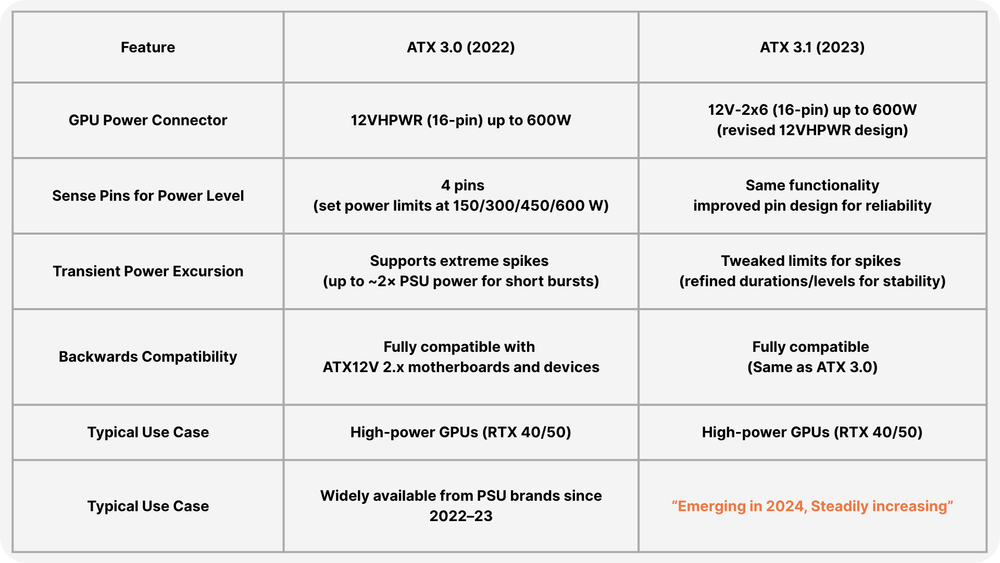
Table: Comparing key aspects of ATX 3.0 vs ATX 3.1 power supply standards.
As shown above, the differences are not dramatic – ATX 3.1 mainly fine-tunes what ATX 3.0 introduced. Both standards require high efficiency (with ATX 80 Plus certifications typically applied separately) and support new “low-power sleep” states and modern standby features on motherboards (helpful for reducing idle power draw). ATX 3.1 may incorporate slightly updated requirements for those as well, though those changes are minor for end-users.
Practical Implications for PC Builders & Gamers
So, what does all this mean when you’re shopping for or building a gaming PC?
Future-Proofing for GPUs: If you plan to use or upgrade to a high-end graphics card, you’ll want at least an ATX 3.0 PSU. It will have the right cable (12VHPWR) out of the box and can handle the card’s power swings. An ATX 3.1 PSU gives you that plus the latest connector improvements. For example, builders using an RTX 5090 or upcoming next-gen GPUs can plug straight into a native 16-pin cable and trust their PSU to handle sudden spikes in wattage.
Stability Under Peak Loads: If you’ve ever had your PC reset when launching a game or benchmark, a likely cause is the PSU failing to meet a transient spike. ATX 3.0/3.1 units are specifically designed to prevent that. This means more stable performance in scenarios like VR gameplay, intensive ray tracing, or CPU stress tests, where power demand can jump instantaneously. ATX 3.1’s refinements further reduce the odds of tripping protections during these spikes.
Connector Safety: The updated 12VHPWR design under ATX 3.1 mitigates issues that early adopters encountered (like the melting connector problem from not fully plugging in the cable). As a gamer or builder, you should still always ensure the 16-pin plug is fully seated on your GPU and avoid bending the cable too close to the connector. But ATX 3.1 cables will be a bit more foolproof by design. Manufacturers also often include better quality 12VHPWR cables in newer PSUs, sometimes with 90-degree adapters or sturdier plugs.
Do You Need to Upgrade? If you already own a good ATX 3.0 PSU, you likely don’t need to rush out for ATX 3.1. The differences are incremental. However, if you’re buying a new PSU in 2025, check the specs – you might find some units labeled as ATX 3.1. Choosing one will give you the slight edge of the latest standard.
Compatibility: Both ATX 3.0 and 3.1 are fully backward-compatible. They will work with any standard ATX motherboard and PC components. They simply add capabilities. For instance, you can use an ATX 3.0 PSU on an older PC build – it will perform like a high-quality ATX 2.x unit, just with extra connectors (you don’t have to use the 12VHPWR cable if your GPU doesn’t need it). Similarly, an ATX 3.1 PSU will work in any scenario an ATX 3.0 PSU would.
Conclusion
ATX 3.0 vs ATX 3.1 ultimately comes down to evolution, not revolution. ATX 3.0 brought huge improvements for powering today’s power-hungry GPUs and CPUs, and ATX 3.1 fine-tuned those improvements. The main practical takeaways are the support for the 12V2x6(12VHPWR) high-power GPU connector and strong handling of transient surges – both critical for high-end gaming rigs. ATX 3.1 improves the reliability of the connector and adds even more resilience to sudden power spikes, benefiting extreme use cases and further safeguarding against power-related crashes.
For most PC builders and gamers, both standards will serve you well. If you’re on the cutting edge, ATX 3.1 offers peace of mind that you have the latest spec. Otherwise, an ATX 3.0 PSU from a reputable brand already covers the vast majority of needs for current and upcoming hardware. In either case, these standards represent a positive development: they are ensuring that PSUs keep up with the fast pace of GPU and CPU advancements, delivering stable and safe power for your gaming adventures.

